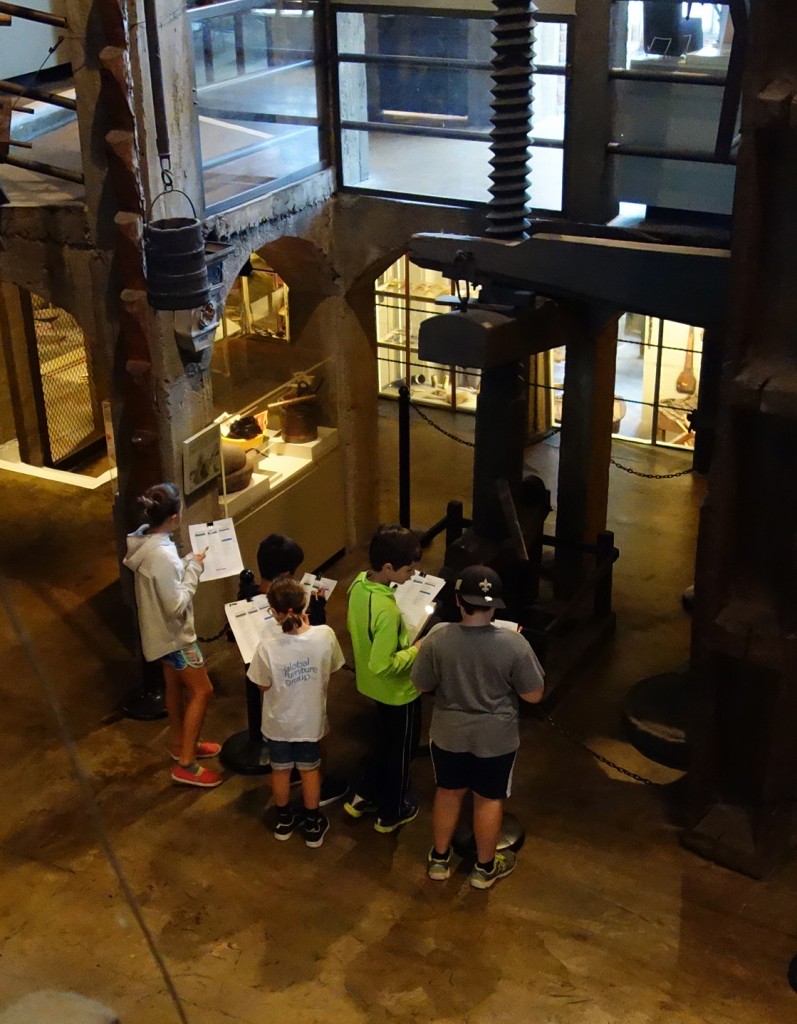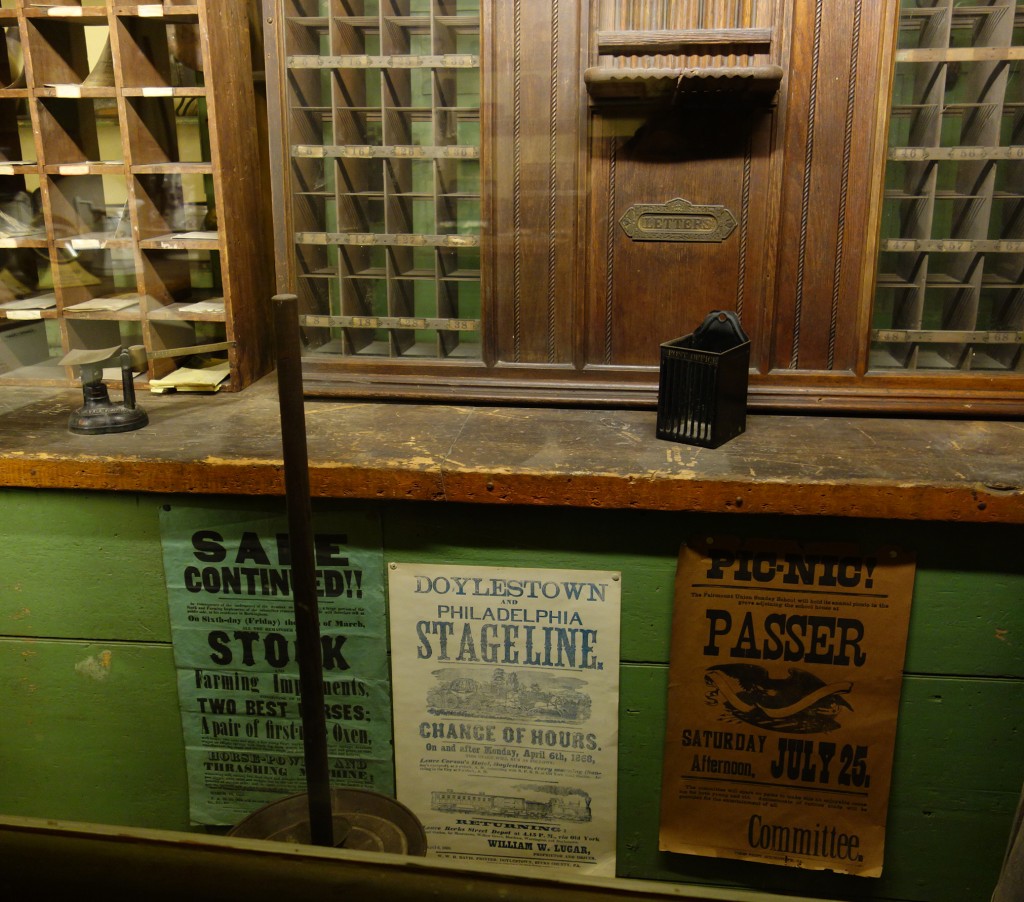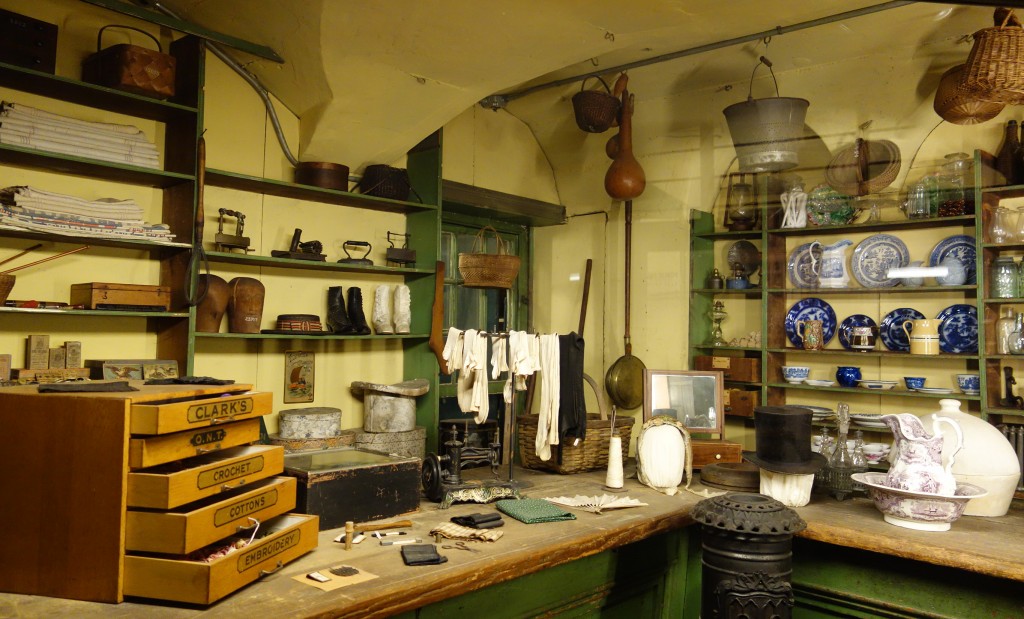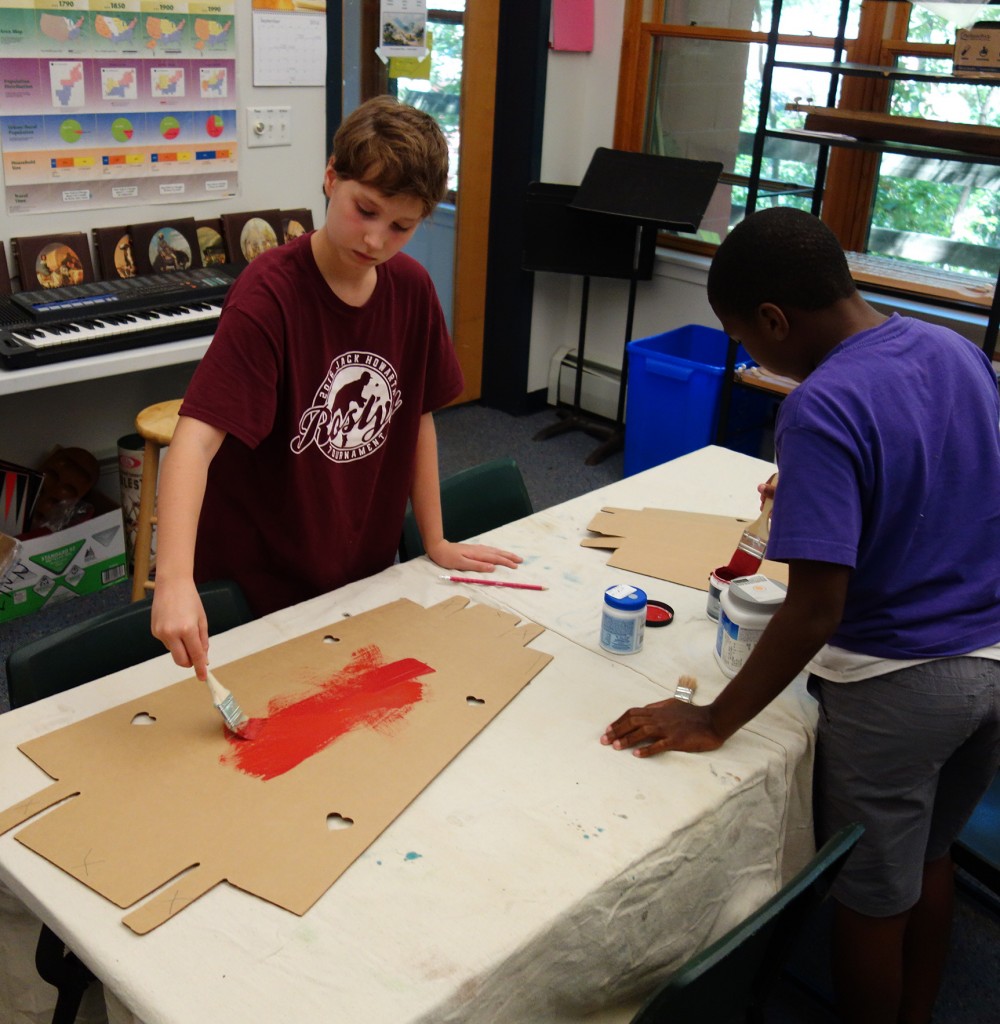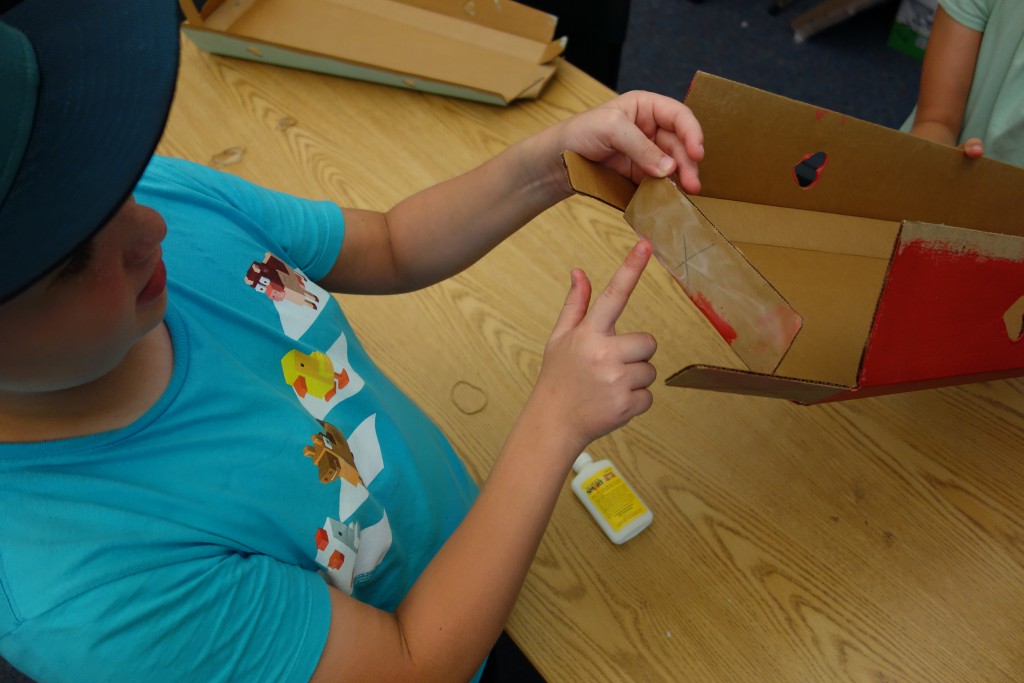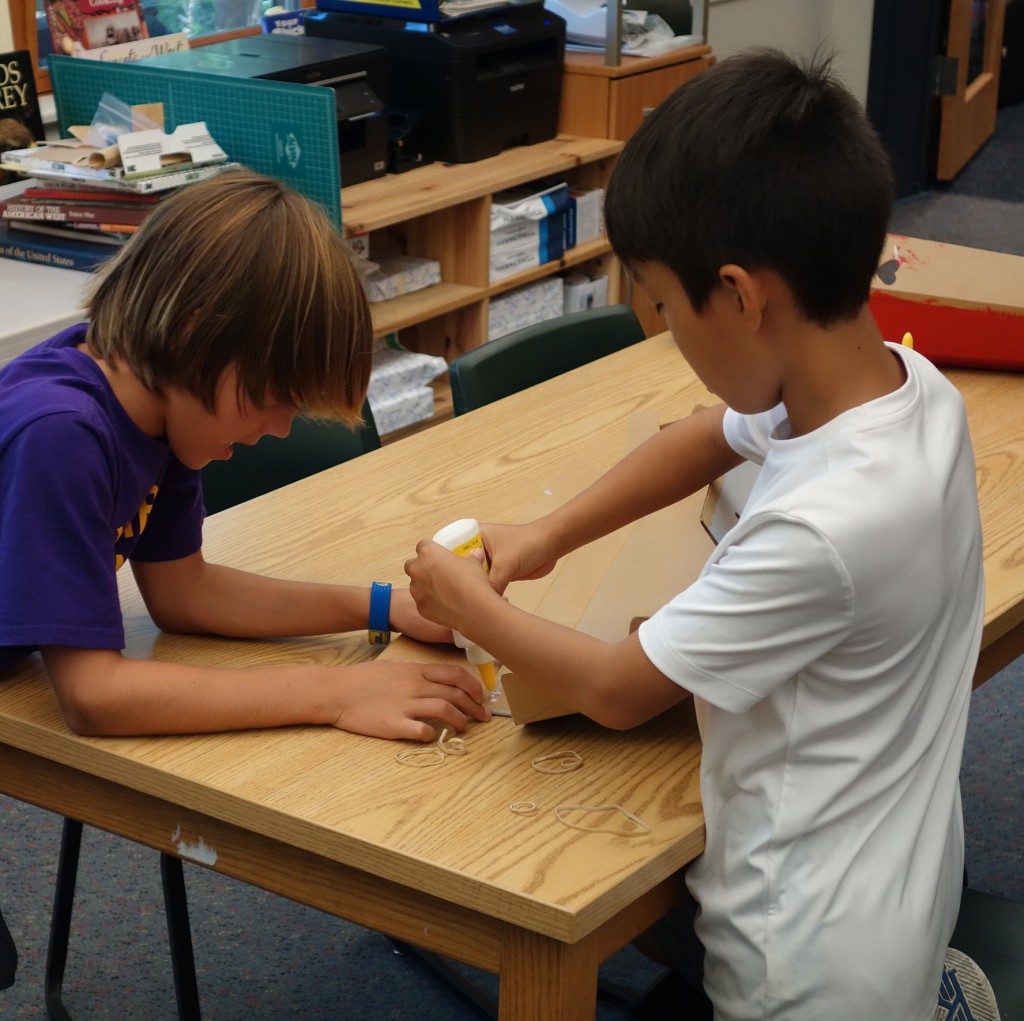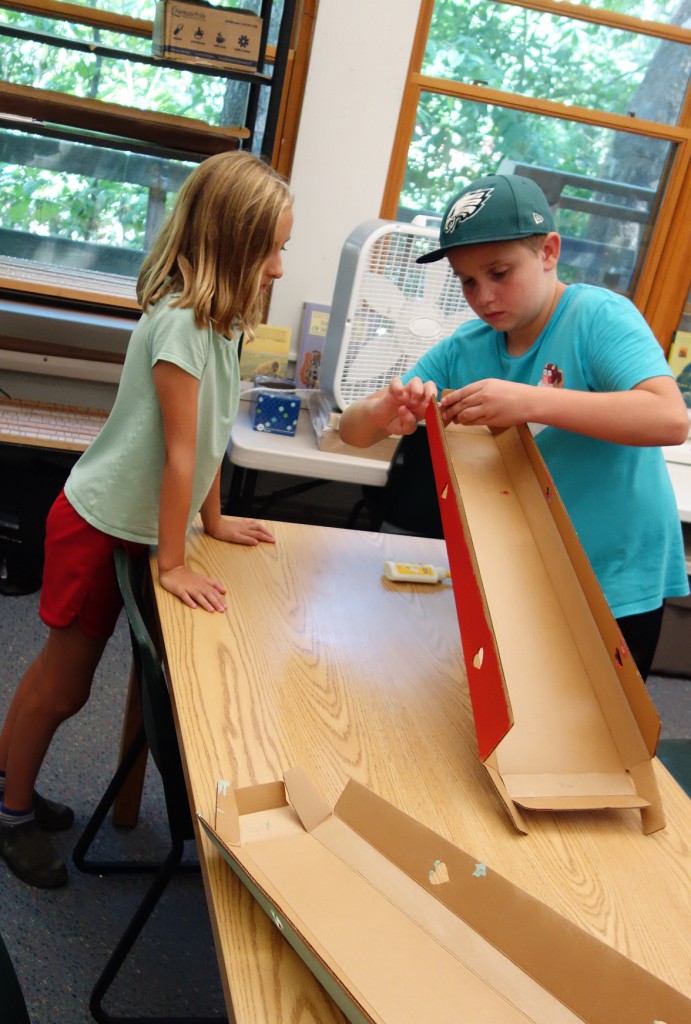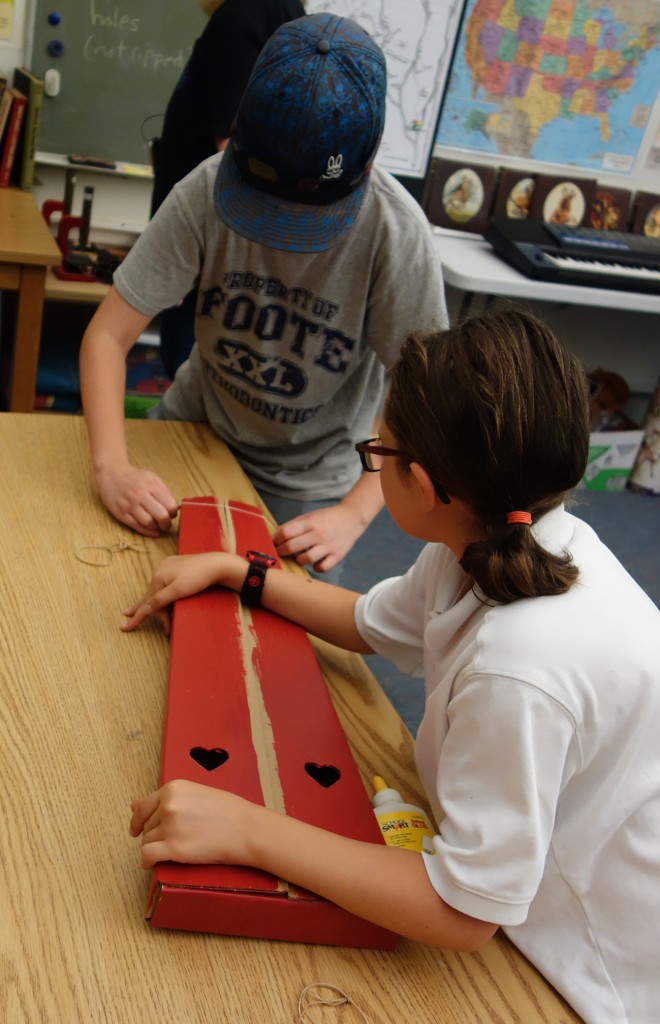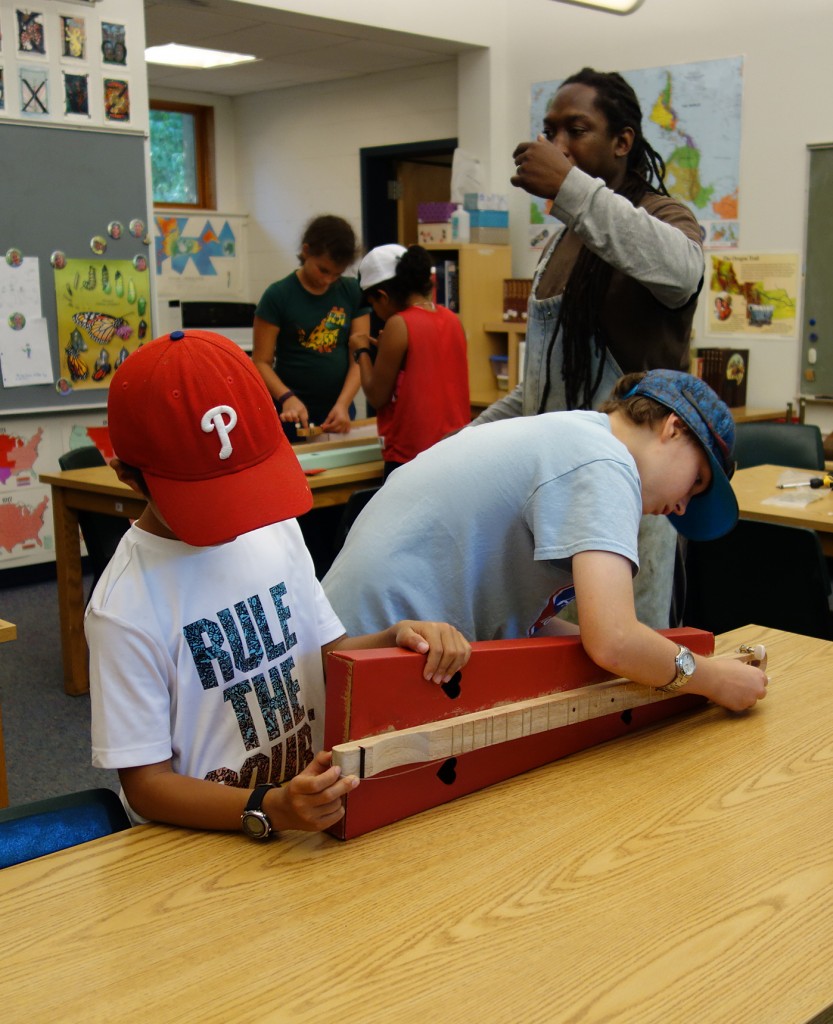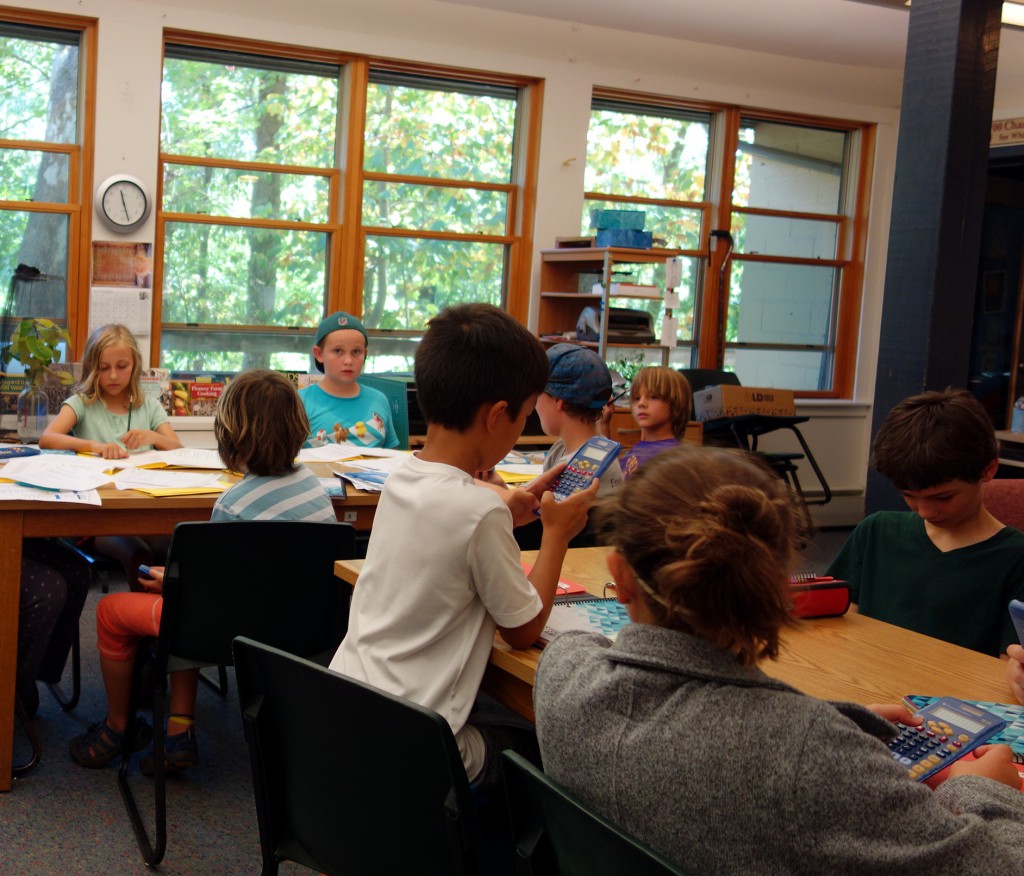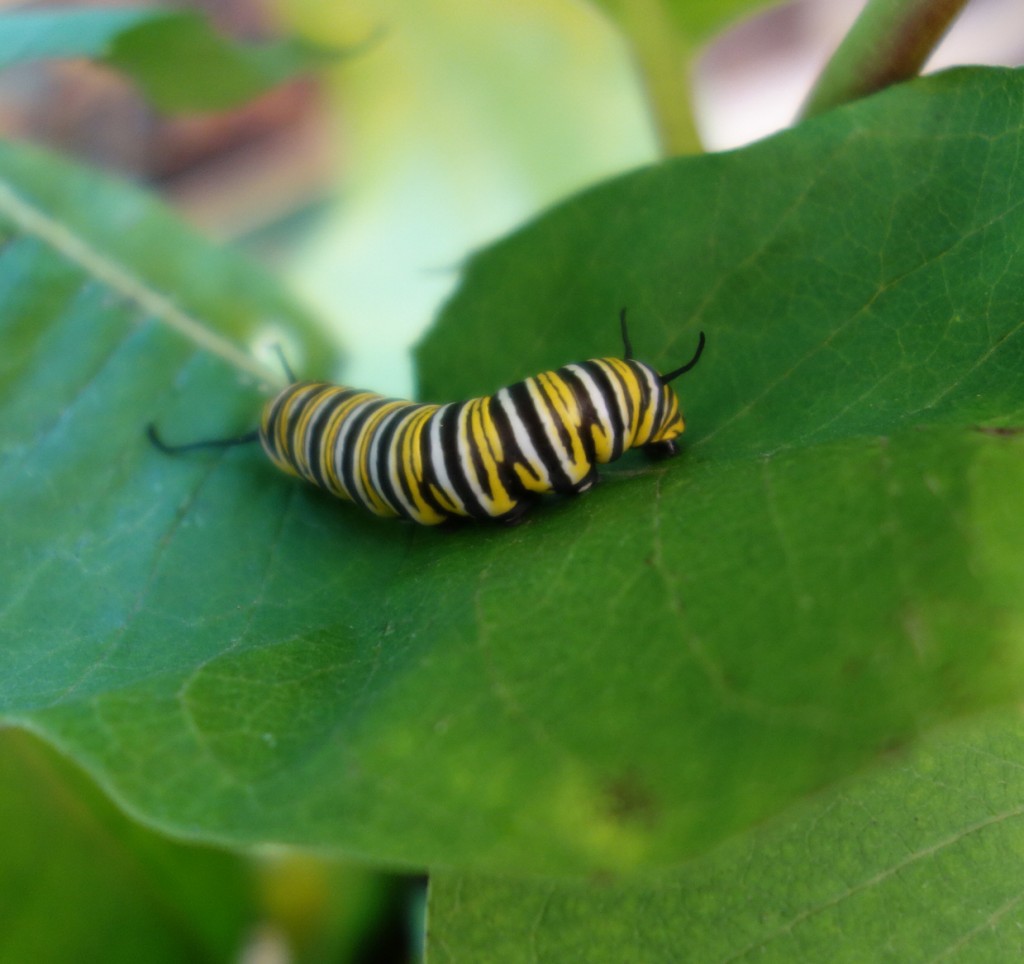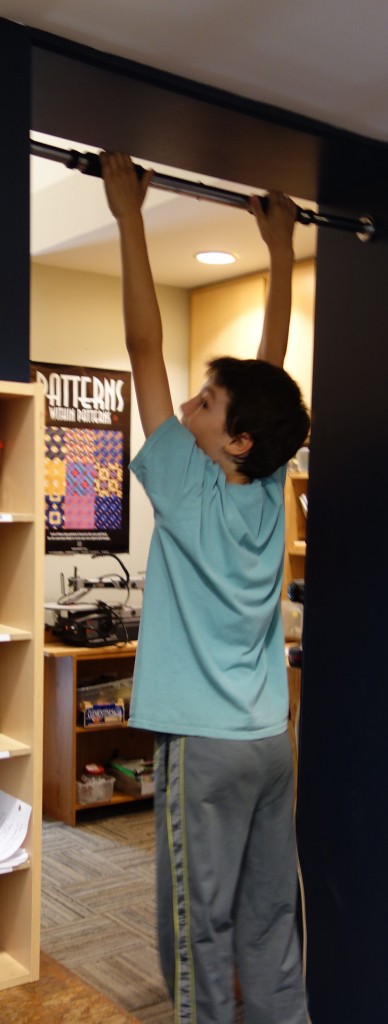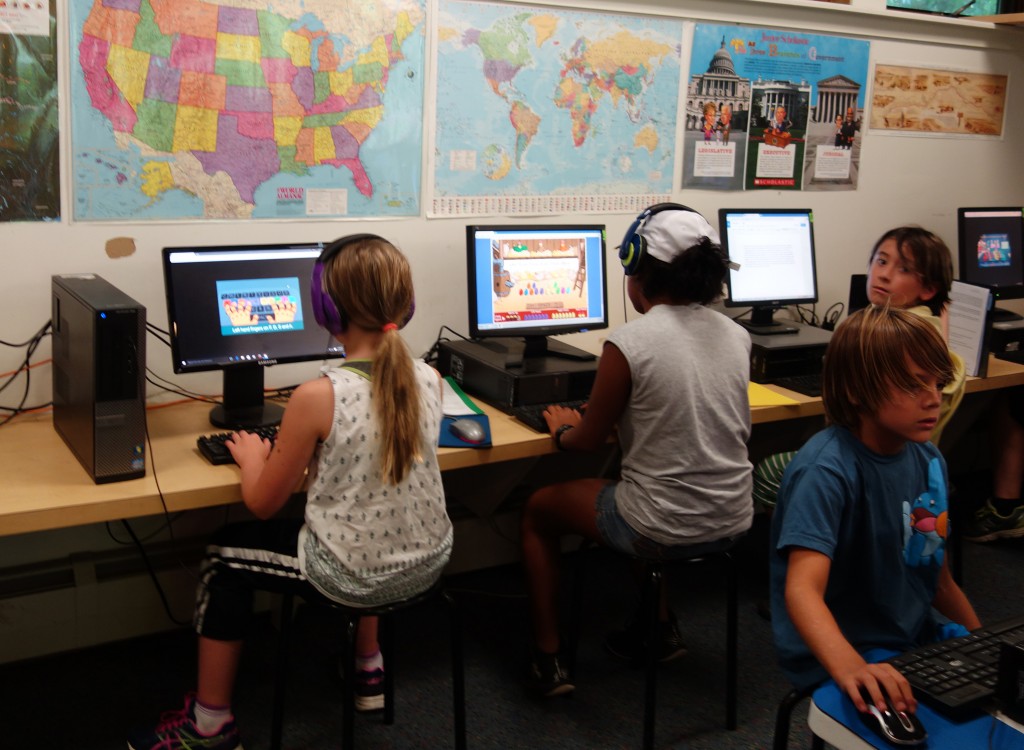We went to the Mercer Museum in Doylestown on Tuesday to see the collection that Henry Mercer began in the late 19th century. He wanted to preserve the tools and other material aspects of life before the Industrial Revolution. Since many things in the vast and varied collection would have been familiar to most of the families who journeyed in covered wagons, we wanted students to see them. They engaged with it as a scavenger hunt, trying to find as many things as possible that were on their own packing list. In small teams, they roamed the floors, looked at the objects hung just about everywhere, and were able to find quite a few things that they could take with them. We looked closely at the Conestoga wagon, which was the heavier predecessor of the “prairie schooners” in which our students will travel. Thank you to Jim Staples and Douglas Gauck for coming with us. Their participation made it possible for us to tour in small groups.
A temporary exhibit at the museum focused on the American flag — its history and its use in advertising, art, and design. We spent some time there after lunch. One of the more moving displays was an enormous copy of the President’s executive order issued after Pearl Harbor that required people living on the west coast who were as little as 1/16th Japanese in their ancestry to move to concentration camps further inland. They had 6 days to pack what they could carry. Hanging in front of the document in the exhibit were dozens and dozens of red, white, and blue paper cranes that represented the flag. We had a good discussion about this and several other socio-political works.
Our dulcimers are just about completed. After we put a clear polyurethane coating on the inside of the cardboard soundbox, we painted the outside, folded and glued it, stacked on books to keep it togethr overnight, glued on the fretboard, stacked books again, and finally put in a few more screws so we could attach the three strings. Students needed a partner for much of this work, as two hands were just not enough. We’ll finish putting the strings on the unfinished ones on Monday. Then students will start learning to play them. Stay tuned. (Joke.)
Packing the wagons involves learning to use a spreadsheet. While some students were completing their dulcimers on Friday afternoon, I introduced others to the use of formulas and some early-computer history. I told them about the creation of the spreadsheet software called VisiCalc in the late 1970s, which led to greatly expanded use of small computers in homes and businesses. As students started to pack, they could see that the spreadsheet would not only figure the total weight for each choice (such as six 25-pound bags of flour) but also would add it to the running total for the wagon. Their upper limit is 1,500 “bulk weight units” — which means making some hard choices. The “BWU” number for each item was assigned by the creators of this simulation and represents both the mass and the size of the item. Although I have made many changes to this lengthy activity over the years, this part has been kept intact. As always, there were a lot of questions. What’s a grain cradle? (We saw one at the Mercer museum.) Do we need a bedpan? How big is a keg of gunpowder? What’s a . . . elb? A lib? (It’s the abbreviation for pound, I explained.)
We got started in our Primary Mathematics workbooks this week. The early activities are intended to be review, but some students encountered information and processes for the first time. This series of books is part of the approach generally known as Singapore math. We got out our atlases to find Singapore and talked about the way this city-state developed a mathematics curriculum that is used in some form all around world. Although these books will be used heavily throughout the year, they are only one part of a resource-rich mathematics curriculum at Miquon. For example, students analyzed some data about their wagon train groups. What percent of your train’s people are children under 16? What are the mean and median number of people in your train’s families? We used calculators, learned more about their features, reviewed and introduced vocabulary, and rounded a lot of inconvenient decimal numbers.
We released two butterflies on Monday that had emerged during the weekend and waved them off on their long journey to Mexico. Our one caterpillar changed into a chrysalis, which we suspect is going to have its butterfly emerge next weekend. I hope it will wait until Monday. Seeing the chrysalis split open and a wet-winged butterfly appear is a magical experience that entrances our kids (and the teachers) every time — when we are lucky enough to see it.

Another event of the week was our first lunch sale. Students had to collect and record each classroom’s orders on Thursday as well as pack and deliver the lunches on Friday. We are proud to report that their work was perfect! This is not an easy job.
Thanks to our maintenance guy, Mike Batchelor, we got a chinning bar put up in a doorway this week. Students have long enjoyed trying to jump up and slap that same doorway. The bar is a bit more fun. We really need more large-muscle equipment around the school for our oldest students, and it is coming slowly. One of the mini-courses in this session is building a low, horizontal-travel climbing wall on the concrete wall of the Moore building. It will be kept low so students can use it freely during their choice time.
We’ve been doing some touch-typing practice in class, using some of the free sites that are available online. This is an important skill, as we work on the computers frequently. It would be a big help if parents could remind students to practice at home, too. Ten or fifteen minutes several times a week will build speed and accuracy.
It’s been another very full week!


